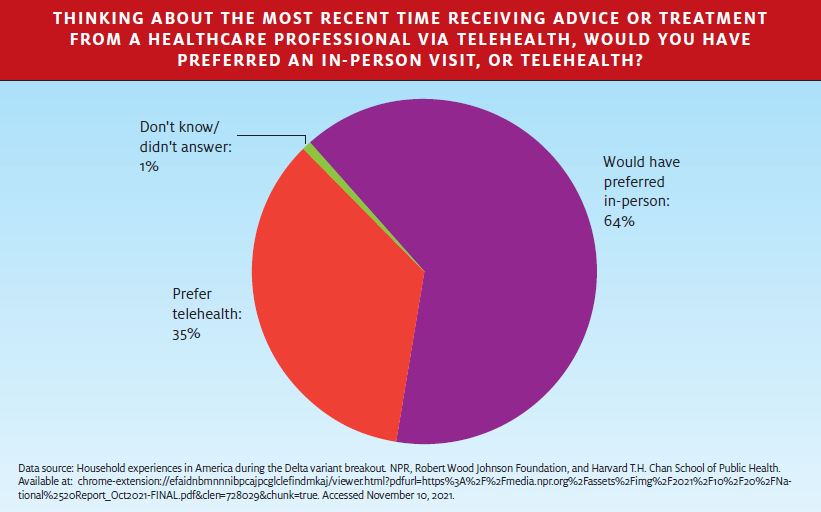There’s been a lot of discussion (including in JUCM and JUCM News) as to whether the COVID-19 pandemic would usher in a Golden Age of telehealth, whether within urgent care or in possible competition with urgent care. Now that we’re approaching 2 years in, actual data on the subject are starting to emerge.
First, some background: Household Experiences in American During the Delta Variant Outbreak, a survey conducted this year for NPR, the Robert Wood Johnson Foundation, and the Harvard T.H. Chan School of Public Health asked 3,616 U.S. adults (18 years of age and older) to share any “serious problems facing both themselves and others living in their households” between August 2 and September 7, 2021. Many of the questions were not directly related to healthcare, though it’s likely there’s overlap
between complaints that family incomes were adversely affected and concerns that medical needs went unmet.
One section of the survey focused on healthcare issues. The fact is that a lot of people—42% of respondents’ households—really did utilize telehealth as the Delta variant became more pervasive in this country instead of chancing a trip to a brick-and-mortar practice. And 82% of them said they were either completely or somewhat satisfied, compared with 17% who were completely or somewhat dissatisfied.
This is far from a game-changer, however. As you’ll see in the graph below, even being highly satisfied hasn’t convinced the majority that they’re eager to repeat the experience.

